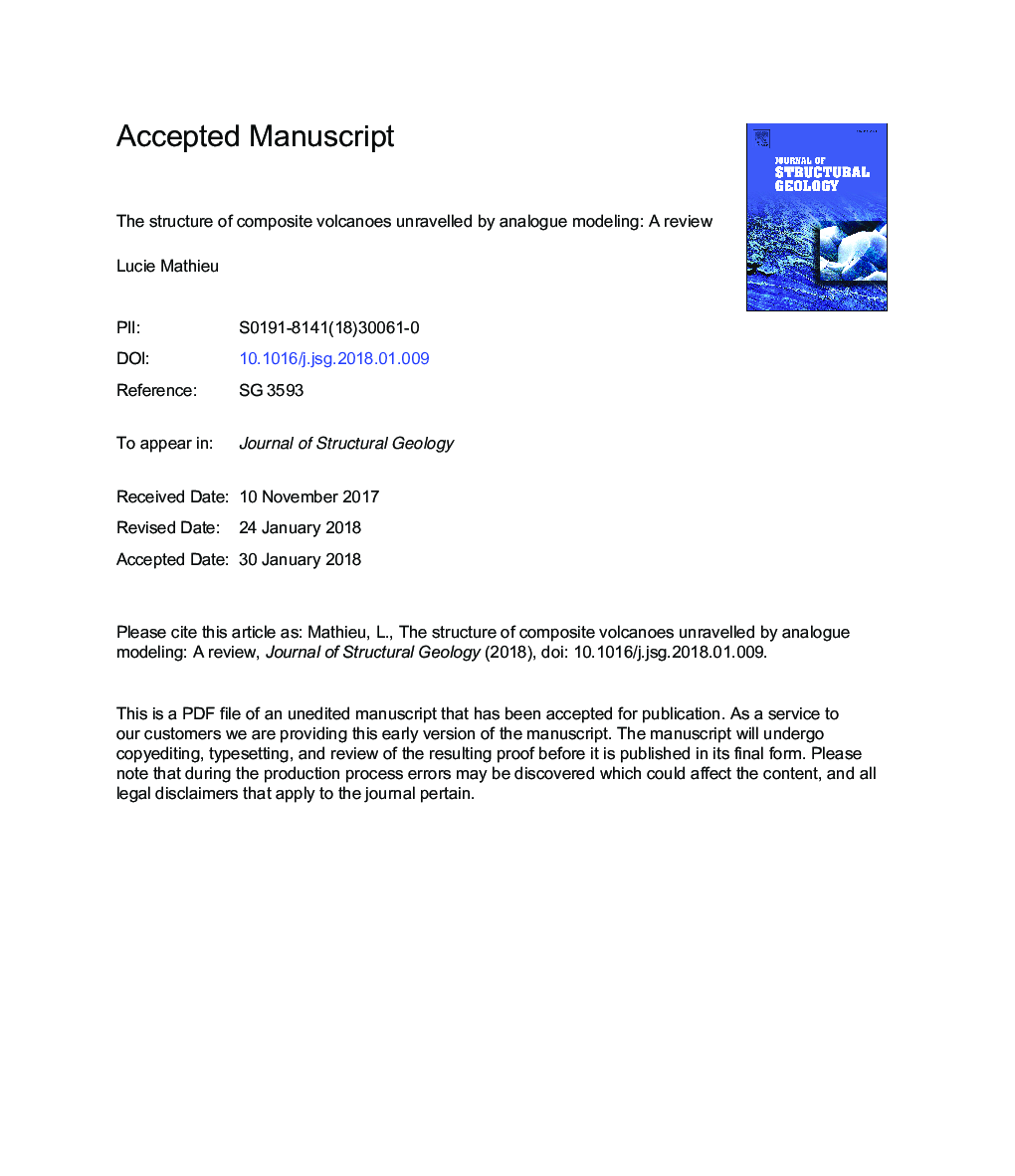| Article ID | Journal | Published Year | Pages | File Type |
|---|---|---|---|---|
| 10120765 | Journal of Structural Geology | 2018 | 41 Pages |
Abstract
Volcanic edifices are unstable accumulations of eruptive and intrusive products with complex internal structures. A documentation of these structures facilitates the assessing of the various hazards associated with volcanoes, e.g. flanks instabilities and eruptive events. However, structures are not easily assessed in the field, as volcanoes are regularly covered by eruptive products and are rapidly eroded. In the case of recent and active volcanoes, internal structures are generally extrapolated from the external morphology of the edifice, which can be documented using Digital Elevation Models (DEM) and geodetic data. Interpretation of such data greatly benefits from analogue models, which are idealised representations of reality used to test the impact that various processes may have on the shape of a volcanic edifice. This short review focuses on the contribution of analogue models to our comprehension of the internal structure of composite volcanic cones. The other volcanic morphologies (e.g. caldera) are excluded from this review, as they have distinct structure and evolution that have already been thoroughly reviewed. The reviewed models were used to investigate the impact that regional faults, magma injections and ductile substratum, among other processes, have on the internal structure and surface morphology of many volcanic edifices. These models were also used to locate unstable flanks and eruption sites.
Related Topics
Physical Sciences and Engineering
Earth and Planetary Sciences
Geology
Authors
Lucie Mathieu,
